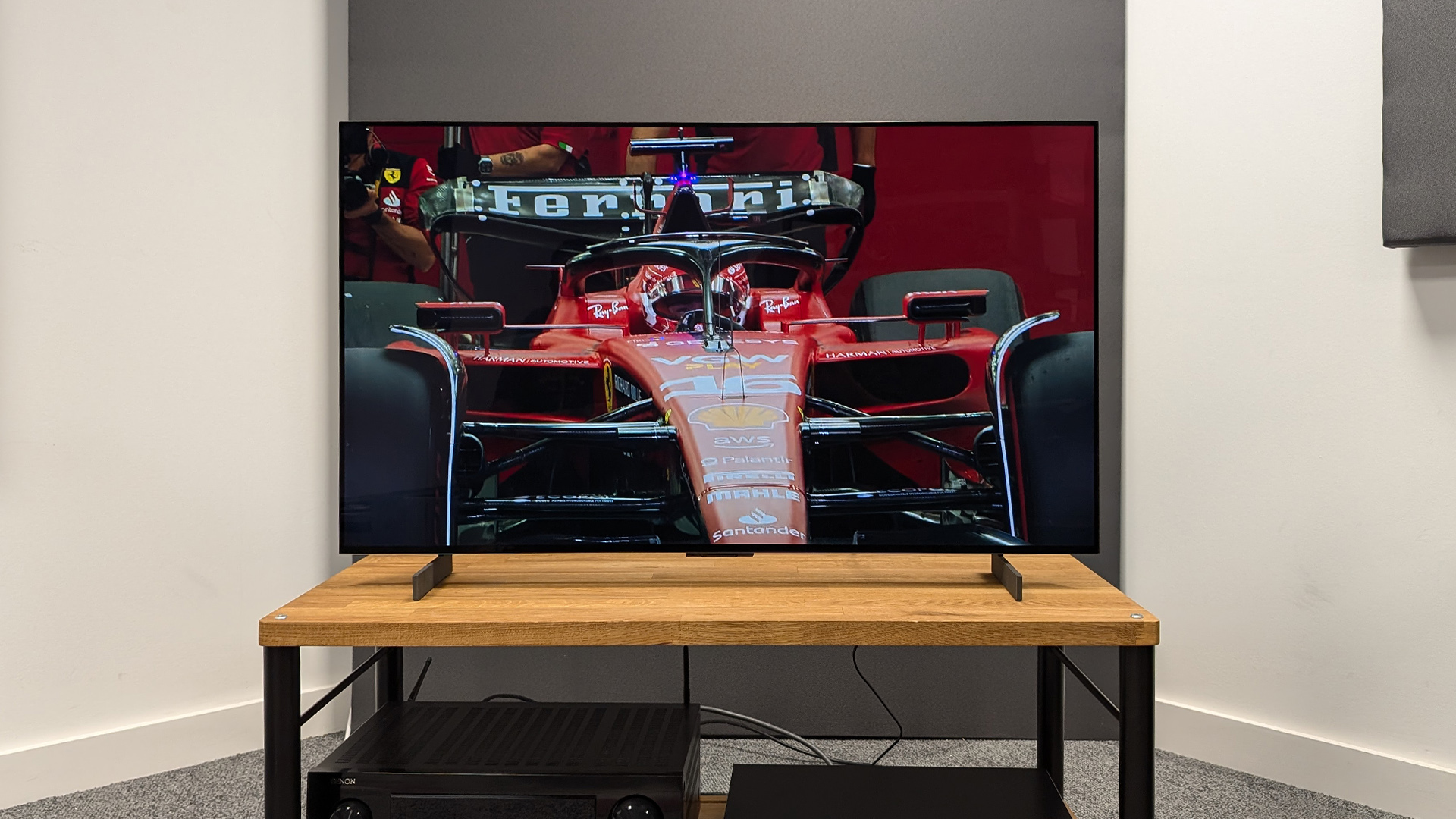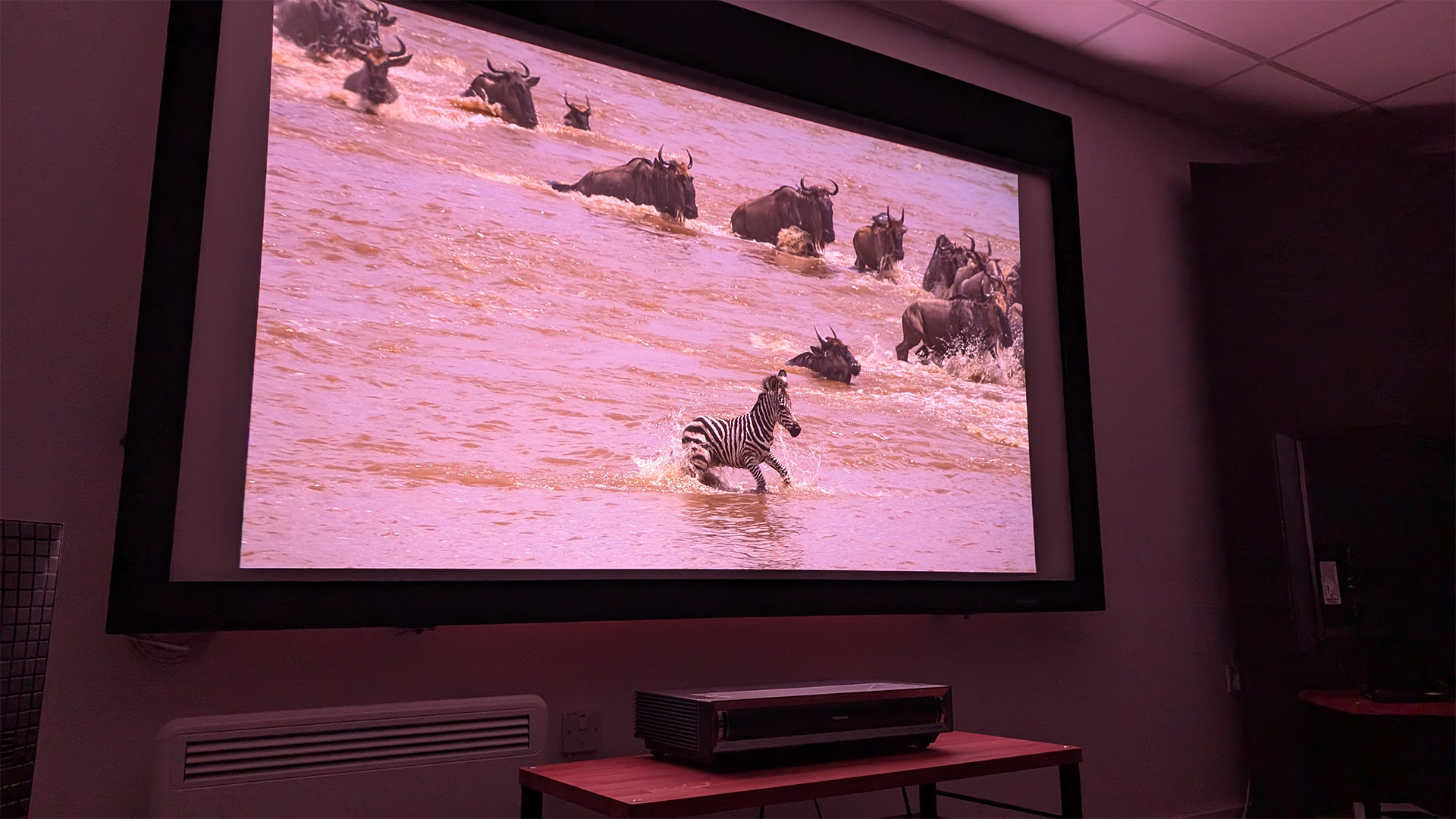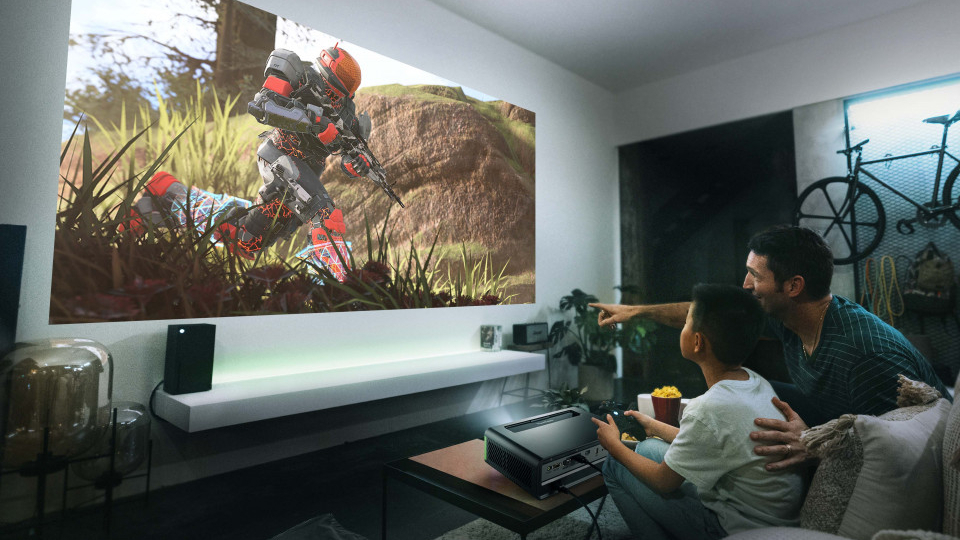
The motion handling of a display is one of the most difficult aspects of video to understand but the easiest to see when it isn’t performed correctly. TV and projector manufacturers make a huge effort to ensure their displays handle motion as effectively as possible. So how is motion created in terms of video, why does it sometimes not look right, and what can you do to improve it?
Read on to learn everything you need to know about motion handling.
What is film and video motion?
Film and video motion is created in the same way, by taking a series of still images or frames and showing them in quick succession. Thanks to the persistence of vision, the brain perceives these still images as motion. So whether you’re looking at a zoetrope or an OLED TV, it’s the same principle.
In the case of film, motion is achieved by literally running frames of film through a camera, but with video individual images are captured as fields on a sensor. These are then displayed using a film projector in the case of the former, or as is more likely these days a TV or video projector.
Regardless of how motion is captured or displayed, there are limitations in handling both.
What are the limitations when capturing motion?

In the early days of cinema, there was no standardised frame rate, but 18 frames per second (fps) delivered reasonably smooth motion. With the advent of sound, the frame rate needed to be standardised so audio could be synchronised, and a frame rate of 24fps was chosen.
This was basically a compromise: fast enough to ensure good quality sound but slow enough that it didn’t use up more physical film stock – which was expensive – than necessary. While this frame rate has a particular look that is universally associated with film, it isn’t without its issues. At 24fps you can experience flicker, blurring on fast-moving objects and judder on camera pans.
In the early days of video, the signal was interlaced and delivered as PAL at 50Hz in the UK and Europe, and NTSC at 60Hz in the US and Japan. The reason for the difference in refresh rates was purely down to the electrical systems in those respective territories.
When the interlaced fields were combined into a progressive signal, the result was either 25fps or 30fps depending on the TV format. This wasn’t much better than film at 24fps and tended to suffer from many of the same issues. These days video is generally captured at 50fps or 60fps, resulting in significantly smoother motion with less flicker, blurring or judder.
As an aside, the video game industry has had a similar journey, going from rather jerky movement at 25fps or 30fps to smoother motion using at least 50fps or 60fps on PCs and modern consoles.
What are the limitations when displaying motion?
When it comes to projecting physical film there is too much visible flicker at 24fps, so a rotating mirror is positioned inside the projector that repeats each frame. This essentially doubles, or in some cases even triples, the frame rate, thus reducing flicker while also retaining the film's look.
With TVs and video projectors, the issues are a little different and primarily relate to how an image is created. Whether it’s a TV (plasma, LCD or OLED) or projector (LCD, DLP or LCoS), they use a system called ‘sample and hold’, which stores each frame in a memory, showing it on screen for the entire refresh period of the display. This can result in blurring on fast-moving objects or judder on camera pans, even when the content is captured at higher frame rates such as 50fps or 60fps.
As a general rule, OLED TVs and DLP projectors are better at handling motion due to their faster response times. This essentially means that the amount of time a frame needs to be held is shorter, resulting in fewer motion artefacts. LCD TVs and projectors using LCoS (liquid crystal on silicon) – a variation on LCD – hold frames for longer and tend to be less accomplished when it comes to motion handling
How can motion handling be improved?

There are several features that manufactures add to modern TVs and projectors to enhance their motion. The first is simply a variation on the method employed in film projectors, with the display repeating frames to increase 24fps content to 48fps, 72fps or even higher, thus eliminating any flicker while still retaining that all-important film-like quality in the motion.
Another feature sometimes employed is called ‘black frame insertion’ (BFI). This works by creating a black frame between each actual frame of a signal – either by flickering (strobing) the backlight on an LCD TV or actually inserting black frames in the case of OLED TVs. This approach can help reduce persistence blur on fast-moving objects – and without 24fps losing its film-like quality. The downside is that some people see the flickering on LCD TVs, and by adding black frames the overall brightness is reduced. This isn’t an issue with standard dynamic range (SDR) content but is best avoided when watching high dynamic range (HDR) material.
The most popular motion picture enhancement is referred to as motion smoothing but should technically be called frame interpolation. This approach sees the display analyse two frames and then interpolate (essentially guess) what the frame between them would be. It’s not dissimilar to how upscaling increases an image’s resolution by interpolating the additional pixels required.
The number of frames added between two actual frames can vary but is usually a function of the display's refresh rate. Ultimately, the intention is to smooth out the overall motion and thus reduce any blur, ghosting or judder. Motion smoothing has become very sophisticated in recent years and now employs artificial intelligence (AI) to make all that guessing a lot more educated.
When should you use motion smoothing?
Many film cinephiles will insist on no motion smoothing when watching movies, claiming that this preserves cinematic authenticity and avoids the dreaded 'soap opera effect', which is where the addition of extra frames smooths out film content so that it no longer looks like film and instead resembles video. However, this ignores the facts that native 24fps content tends to look more juddery on a home TV than a cinema projector, and that some motion smoothing is capable of significantly reducing this judder without adding the soap opera effect.
Our recommendation with movies is to experiment with your TV's motion processing features and see what you prefer. Perhaps start with all motion smoothing switched off and see if the judder bothers you. If it does, switch motion smoothing to 'Minimum' or 'Low' and see how you get on with that. Everyone responds differently to motion handling and every TV handles motion differently, so you must take your time and stick with what feels most right to you. For what it's worth, though, we very rarely find that a TV works best with anything but the very minimum amount of motion smoothing.
Anyone raised on a diet of video games may not be so bothered about smoothed-out film motion, but if you’re a serious gamer you should also turn off any motion smoothing whilst gaming. The reason for this is that the additional processing required will usually significantly increase the input lag and make your game feel sluggish.
The area where motion smoothing arguably has the most benefit is watching sports. The fast-paced nature of many sports, with balls zipping about and cameras whiplashing back and forth, is often a struggle for the motion handling of displays. By interpolating extra frames the smoothing can deliver movement with less blurring and more perceived detail, plus reduced judder on camera pans.
On the other hand, the unpredictable nature of a lot of sporting action can pose a particularly tricky challenge for motion processing systems, which can add some odd 'artefacts' to, for example, players and crowds. Sports are also generally shot and broadcast on video at 50 or 60fps, so there's less inherent judder than you get with 24fps content. As with movies, we recommend experimenting with your TV's or projector's specific motion processing settings and seeing what looks best to you.
Are there any further downsides to motion smoothing?

We've already touched upon the downsides of motion smoothing, including the 'soap opera effect' and increased input lag, but it's worth digging into the 'artefact' issue a little further.
The effectiveness of any motion smoothing will largely depend on the sophistication of the interpolation algorithms and the processing power of the display. These days the motion smoothing of established brands is often very capable, with AI-enhanced interpolation and enough processing power to ensure artefacts are kept to an absolute minimum.
However, when smoothing is poorly implemented, either due to less capable interpolation algorithms or insufficient processing power, the movement can suffer from artefacts such as ghosting, digital noise in backgrounds or blurring around the edges of moving objects, plus stutter on camera pans. As a result, bad motion smoothing can be worse than a display’s inherent motion handling, especially on today’s huge screens.
As we've said a couple of times already, the best approach with motion smoothing is to experiment with the settings to get results that look right for you. Frustratingly, all the manufacturers implement motion smoothing differently and use various names for the feature, but familiarising yourself with your display’s controls will pay dividends.
Does a higher frame rate benefit motion handling?
The higher the frame rate, the better the motion handling. This is the entire philosophy of motion smoothing – adding extra frames to create more fluid movement. But these additional frames are only guesses, which is why even the best implementations can introduce unwanted artefacts.
However, if content is captured at higher frame rate (HFR) then all the information is already there, and the motion will be significantly smoother and more detailed.
There have been attempts to capture movies at higher frame rates, with The Hobbit shot at 48fps and Gemini Man shot at 120fps, but the results have been divisive to say the least. While the movement is more fluid, the look of 24fps is lost and thus these movies no longer have that all-important film-like quality.
This isn’t an issue with games, where higher frame rates offer superior gameplay with fluid changes in point of view and smooth motion across the screen. Thanks to the introduction of the PlayStation 5 and Xbox Series X consoles, along with HDMI 2.1 and displays able to handle 4K at up to 120fps, many recent games offer incredibly smooth, detailed and dynamic motion. A lot of TVs also include variable refresh rate (VRR) support, which adapts the frame rate depending on what’s happening in the game. The result is a seamless experience that’s free of frame tearing or other distracting motion artefacts.
The other area where HFR has huge potential is live sports broadcasting, and while it’s still early days the results are incredibly impressive. The current problem is the amount of information that needs to be transmitted or streamed because doubling the frame rate also doubles the data.
More efficient compression algorithms will help with data sizes, and capturing fast-paced sports such as football or tennis at 120fps is definitely worth it. HFR delivers fantastic motion handling, with remarkably detailed movement of balls, fluid player motion, and super-smooth camera moves. If you’re lucky enough to see a demo of live sport in 4K, HDR and HFR it’s almost like being there – especially on a huge screen.
MORE:
Best TV 2024: flagship OLEDs and affordable flatscreens tried and tested
Samsung S95E preview: release date and price predictions, and 5 improvements we want to see for Samsung's flagship 2025 TV
What we expect from LG's C5 OLED TV for 2025
What is contrast? And why is it so important to picture quality?







